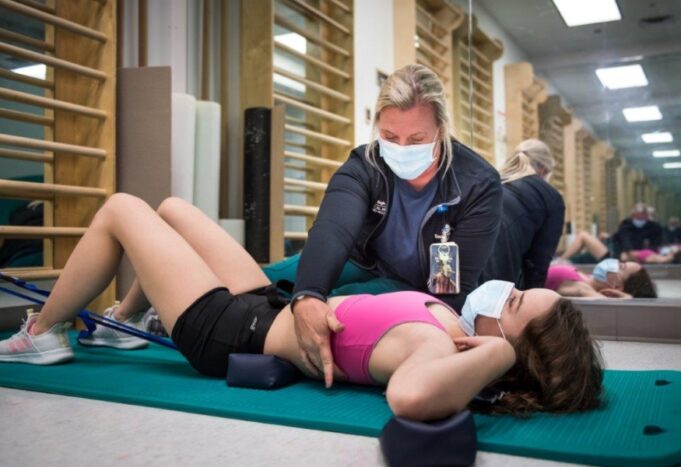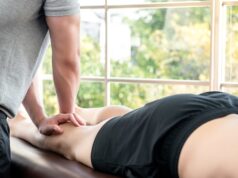The Schroth method is a non-surgical treatment for scoliosis that was developed by German doctor Katharina Schroth (1894-1985). It is considered to be an alternative to surgery or bracing and is used by certified physical therapy therapists all over the globe.
The Schroth Method focuses on corrective breathing and postural strategies that utilize three-dimensional movement as well as custom-designed exercises and patient education to reduce the curves of the spine without having to resort to surgery or bracing.
Schroth Method objective
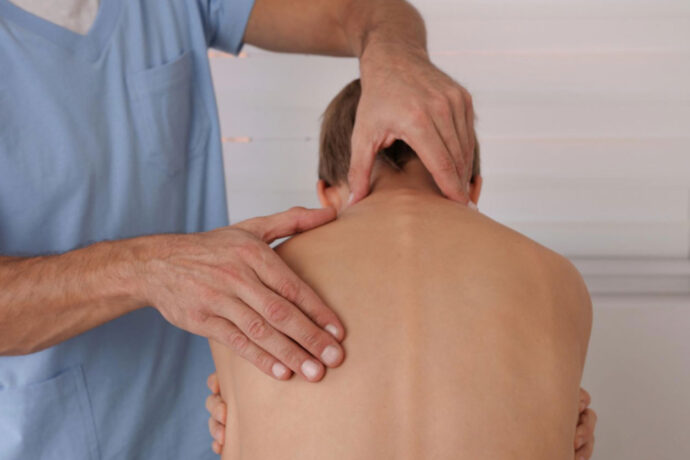
The primary objective of this method is to achieve an improved balance in the trunk as well as reduce the curvature of the spine. This is accomplished by utilizing specific corrective exercises to strengthen muscles that are weak in the shoulders, back, and core, while also stretching muscles that are tight and contributing to an abnormal posture of the body. A therapist can also show the patient to keep a proper posture and breathing patterns during everyday activities.
Furthermore, Schroth therapists offer a comprehensive overview of the condition so that patients can better know their condition and make better-informed choices regarding the treatment options available. This includes knowing about lifestyle adjustments they can implement to lessen discomfort, identifying indicators of progress, and examining the possible advantages of bracing or surgery should it be required.
In combination with other treatments, such as bracing, Schroth Method may provide additional relief from pain and increase your quality of life for those suffering from scoliosis.
Is Scoliosis painful?
Scoliosis can cause pain, dependent on the severity of the curve and other variables such as age. The mild cases might not cause pain but more severe cases may result in fatigue, discomfort, or even chronic discomfort. The most common complaint is pain in the back, as well as potential radiating pain to the neck, shoulders, legs, or arms. It can also manifest by causing headaches, breathing difficulties, or stomach problems due to the compression of nerves caused by the scoliosis curves.
Spasms, muscle stiffness, and cramps are all common signs that are associated with the condition known as scoliosis. In certain cases, surgery to fuse the spine could be necessary to relieve the discomfort caused by scoliosis, if it is not able to be controlled with traditional treatment techniques. Therefore, it is essential for people who have any of the symptoms mentioned above to consult medical professionals and seek treatment if needed.
Scoliosis can cause emotional stress and research suggest that people with scoliosis are more likely to suffer from depression than counterparts who do not suffer from the condition. This is why it is crucial for those suffering from scoliosis to seek psychotherapy in addition to physical therapy when required. Together, these measures will allow those suffering from scoliosis to live happily and fulfilled lives despite the difficulties posed caused by this condition.
Scoliosis symptoms
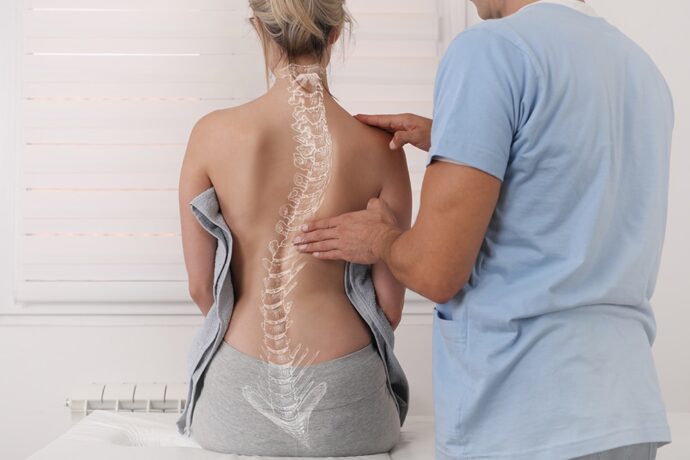
Scoliosis is a medical issue that causes an unnatural curvature of the spine. It is a problem that affects individuals of all ages, but is more prevalent in teens, generally between 10 to 15. Scoliosis symptoms include unbalanced shoulders, where one shoulder blade could seem higher than the other or extend more strongly, an uneven waistline, which has one hip looking higher than the other, and a general appearance of asymmetry in the torso when looking from behind.
In more serious cases, pain could be experienced as well as changes in posture, difficulties breathing as a result of reduced lung capacity due to the compression of one part of the ribcage, and reduced mobility in certain parts of the spine as a result of the curvature that has increased.
Treatment for scoliosis varies based depending on the severity problem and could consist of physical therapy, bracing, or even surgery. It is essential to keep an eye on scoliosis carefully as it may advance over time and trigger additional complications if not addressed.
It is also essential to be aware of any changes in posture or irregularities in the spine that may suggest that you have scoliosis. A timely diagnosis and early treatment are essential for the effective management of this disorder.
If you need professional assistance, you can click here to learn more and get a free consultation.
What can physical therapy do to assist in treating back injuries?
Physical therapy is an excellent treatment for back injuries. It can ease discomfort and increase mobility and allow you to move with less pain and more comfort. The purpose of physical therapy is to improve the flexibility, strength, and coordination in the back area through stretching and exercises targeting specific joints and muscles.
Additionally, incorporating into your physical therapy regimen can further enhance the recovery process. Ortho Bracing offers a range of specialized back braces and supports that provide targeted support and stabilization for the injured back, helping to alleviate pain and promote proper healing. Working with a physical therapist and utilizing products can optimize the effectiveness of your back injury rehabilitation, improving overall outcomes and enabling a quicker return to daily activities.
The initial step for back pain is stretching gently. This increases spinal flexibility. This can lessen pressure on nerves and other back structures that cause discomfort. Stretching can also relieve tension in tight muscles around the spine, providing an additional level of relief from the discomfort of the back discomfort. Furthermore, stretching helps increase the range of motion around your spine. This improves circulation, which aids in the healing of damaged tissue and decreases inflammation.
After the muscles and back region have been warmed up, the strengthening exercises can then be included in the treatment program. Building strength for the core area is particularly helpful in the treatment of back injuries since it can help to support your spine while improving posture.
Core exercises focus on the abdominal muscles that help stabilize your body and ease the strain on the lower back. The strengthening of these muscle groups will help prevent further injuries while also improving overall coordination and strength.
Balance exercises help build your lower extremities while aiding you in developing better control over the movement of your spine. Training in coordination can also enhance the ability of your body to move effortlessly and perform quick adjustments when needed to avoid injuries.
Physical therapy may also include using other techniques like ultrasound or electrical stimulation to ease muscles tight and lessen inflammation in the area of injury. These treatments are often used in conjunction with manual therapies such as joint mobilizations and massages for particular joints affected by some trauma. Physical therapists also recommend lifestyle changes like better posture and exercise modifications to reduce the aggravating factors and speed up the healing of the back injury.
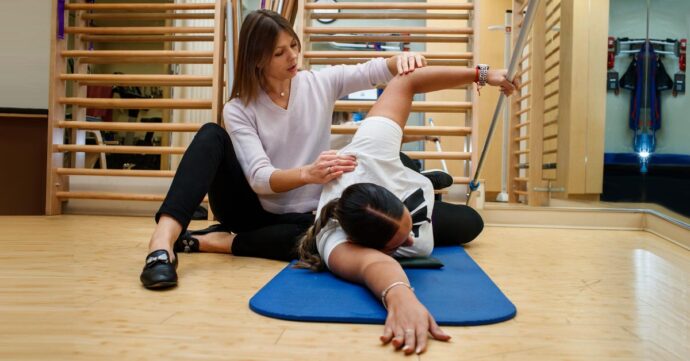
Summing up…
In the end, scoliosis is an all-too-common condition that can cause pain and difficulties with movement if it is not treated. Its symptoms are characterized by uneven shoulders and a slack waistline, shifts in posture diminished lung capacity, and limited movement range in specific parts of the back.
Treatment for scoliosis varies based on the degree of the condition, and early diagnosis is essential to ensure proper treatment. It is essential to seek out medical assistance or psychological assistance when needed so that scoliosis will be controlled and its effects diminished.
The Schroth Method is a conservative treatment for scoliosis that assists in reducing the curvature of the spine, without surgical or bracing. The Schroth Method is not intended to substitute surgery or bracing however it could be an effective method to deal with scoliosis without resorting to conventional methods.

